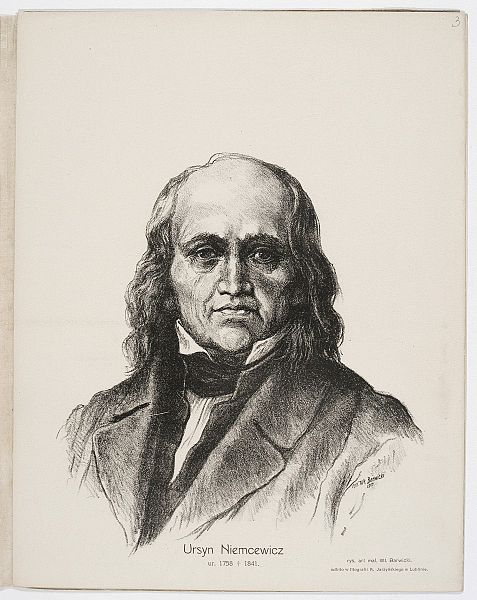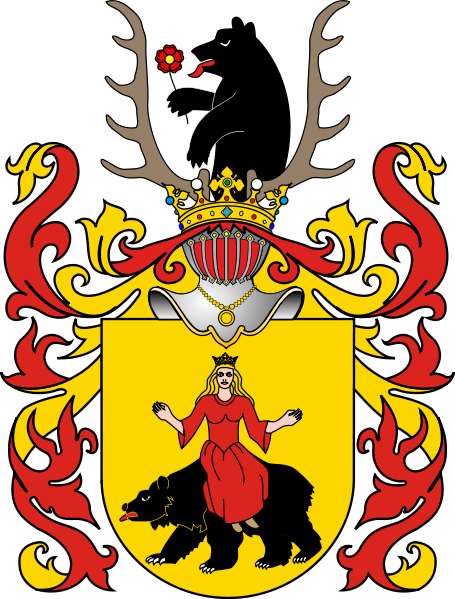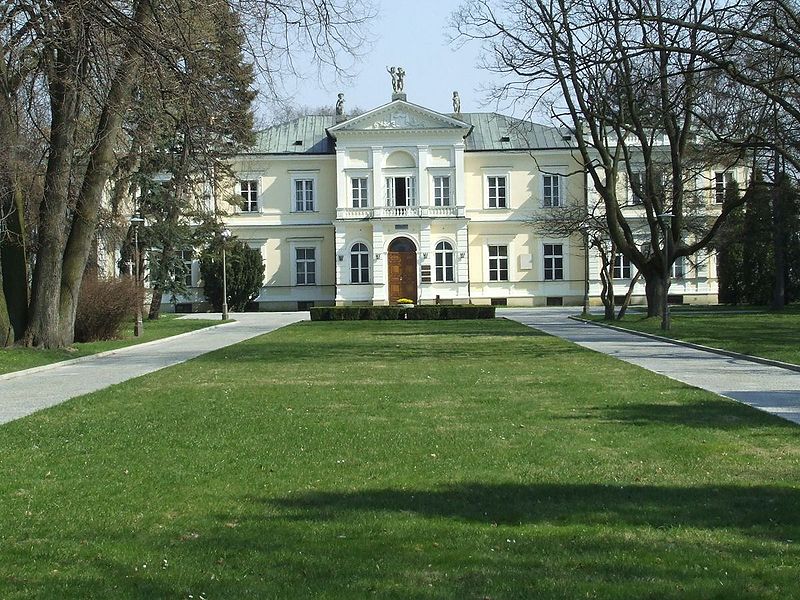<Back to Index>
- Physicist Charles Wheatstone, 1802
- Writer and Statesman Julian Ursyn Niemcewicz, 1758
- Emperor of the Ming Dynasty Chongzhen, 1611
PAGE SPONSOR


Julian Ursyn Niemcewicz (Skoki, near Brześć, February 6, 1758 – May 21, 1841, Paris) was a Polish poet, playwright and statesman. He was a leading advocate for the Constitution of May 3, 1791.
Niemcewicz, scion of a moderately well-to-do Polish noble family, graduated from the Warsaw Corps of Cadets. He subsequently served as aide to Adam Kazimierz Czartoryski and visited France, England and Italy.
During the Great Sejm of 1788 – 92, Niemcewicz was a deputy and an active member of the Patriotic Party that pushed through the historic Constitution of May 3, 1791. He subsequently was a founder of the Zgromadzenie Przyjaciół Konstytucji Rządowej (Assembly of Friends of the Government Constitution), formed to help support and implement that progressive document.
After the victory of the Targowica Confederation in 1792 and the consequent overthrow of the May 3 Constitution, Niemcewicz, along with other Patriotic Party members, emigrated to Germany.
During the Kościuszko Uprising (1795), Niemcewicz served as aide to Tadeusz Kościuszko. Both were captured by the Russians at the Battle of Maciejowice (1794) and imprisoned in the Peter and Paul Fortress at St. Petersburg. In 1795 they were released by Tsar Paul I of Russia and made their way together to the United States, where Niemcewicz married. He was disconsolate when Kościuszko subsequently decamped for Europe without giving him any notice.
After the Congress of Vienna, Niemcewicz was secretary of state and president of the constitutional committee in Poland.
On 11 May 1830 he unveiled a new landmark before the Staszic Palace, the seat of the Society of Friends of Science in Warsaw — a monument to Nicolaus Copernicus sculpted by Bertel Thorvaldsen.
During the failed November Uprising of
1830 – 31, Niemcewicz was a member of the insurrectionary Polish
government. When the Russians suppressed the uprising, Niemcewicz was
again forced into exile. He died in 1841 in Paris. As a writer, Niemcewicz tried many styles of composition. His political comedy, The Return of the Deputy (1790), enjoyed great acclaim. His novel, John of Tenczyn (1825), written in the style of Sir Walter Scott, gives a vigorous picture of old Poland. He also wrote a History of the Reign of Sigismund III (3
volumes, 1819) and a collection of memoirs for ancient Polish history
(6 volumes, 1822 - 23). But he is now best remembered for his Historical Songs of the Poles (Warsaw, 1816), a series of lyrical compositions whose main heroes hark back to the Golden Age of Sigismund I and to the reigns of Stefan Batory and Jan III Sobieski. Niemcewicz's 1817 pamphlet Rok 3333 czyli sen niesłychany (The
Year 3333, or an Incredible Dream), first published posthumously in
1858, describes a Poland transformed into a sinister Judeo - Polonia. The
pamphlet has been described as "the first Polish work to develop on a
large scale the concept of an organized Jewish conspiracy directly
threatening the existing social structure." His collected works were published in 12 volumes at Leipzig in 1838 - 40.
